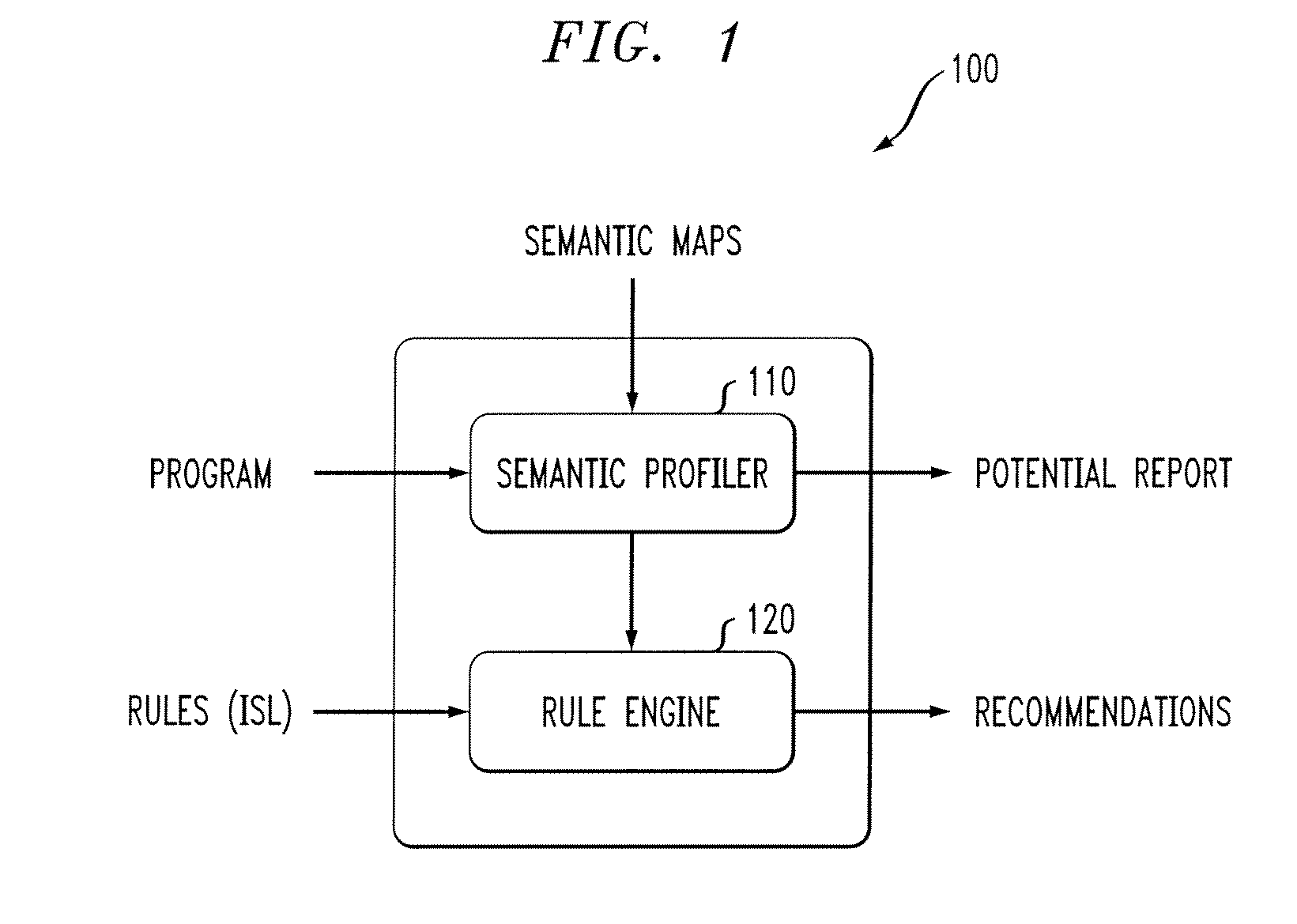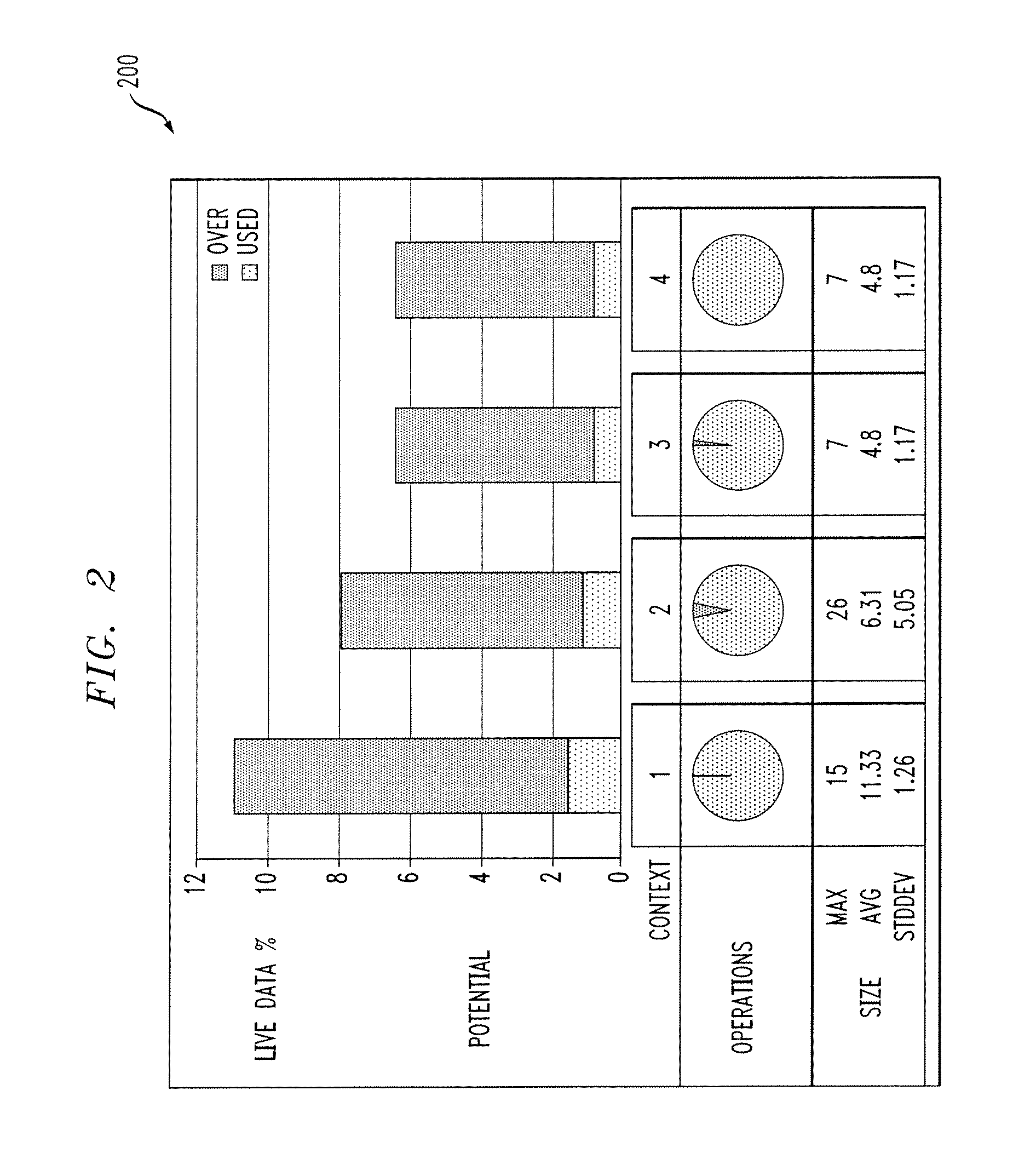Context-sensitive dynamic bloat detection system that uses a semantic profiler to collect usage statistics
a dynamic bloat detection and semantic profiler technology, applied in the field of bloat detection systems, can solve the problems of not clear how to choose an alternative collection implementation, the time-consuming and often infeasible task of manually selecting and tuning collection implementations, and the inability to find program points that need to be modified, so as to improve the allocation of collection, minimize the space, and minimize the time required
- Summary
- Abstract
- Description
- Claims
- Application Information
AI Technical Summary
Benefits of technology
Problems solved by technology
Method used
Image
Examples
example
[0032]TVLA is a flexible static analysis framework from Tel-Aviv University. See, e.g., T. Lev-Ami and M. Sagiv, “TVLA: A framework for Kleene Based Static Analysis,” Saskatchewan, Lecture Notes in Computer Science, vol. 1824, 280-301 (Springer-Verlag, 2000). The framework performs abstract interpretation with parametric abstractions, and computes a set of abstract states that over-approximate the set of all possible concrete program states. Generally, TVLA is a memory-intensive application, and its ability to tackle key verification challenges such as concurrent algorithms (which have large state spaces) is mostly limited by memory consumption. The TVLA framework makes extensive use of collections.
[0033]The present example substantially optimizes the collections usage in TVLA. The first step towards that goal is to check the potential for collection optimizations in the application.
[0034]FIG. 2 illustrates an exemplary ranked list 200 of allocation contexts in which there is a pote...
PUM
 Login to View More
Login to View More Abstract
Description
Claims
Application Information
 Login to View More
Login to View More - R&D
- Intellectual Property
- Life Sciences
- Materials
- Tech Scout
- Unparalleled Data Quality
- Higher Quality Content
- 60% Fewer Hallucinations
Browse by: Latest US Patents, China's latest patents, Technical Efficacy Thesaurus, Application Domain, Technology Topic, Popular Technical Reports.
© 2025 PatSnap. All rights reserved.Legal|Privacy policy|Modern Slavery Act Transparency Statement|Sitemap|About US| Contact US: help@patsnap.com



